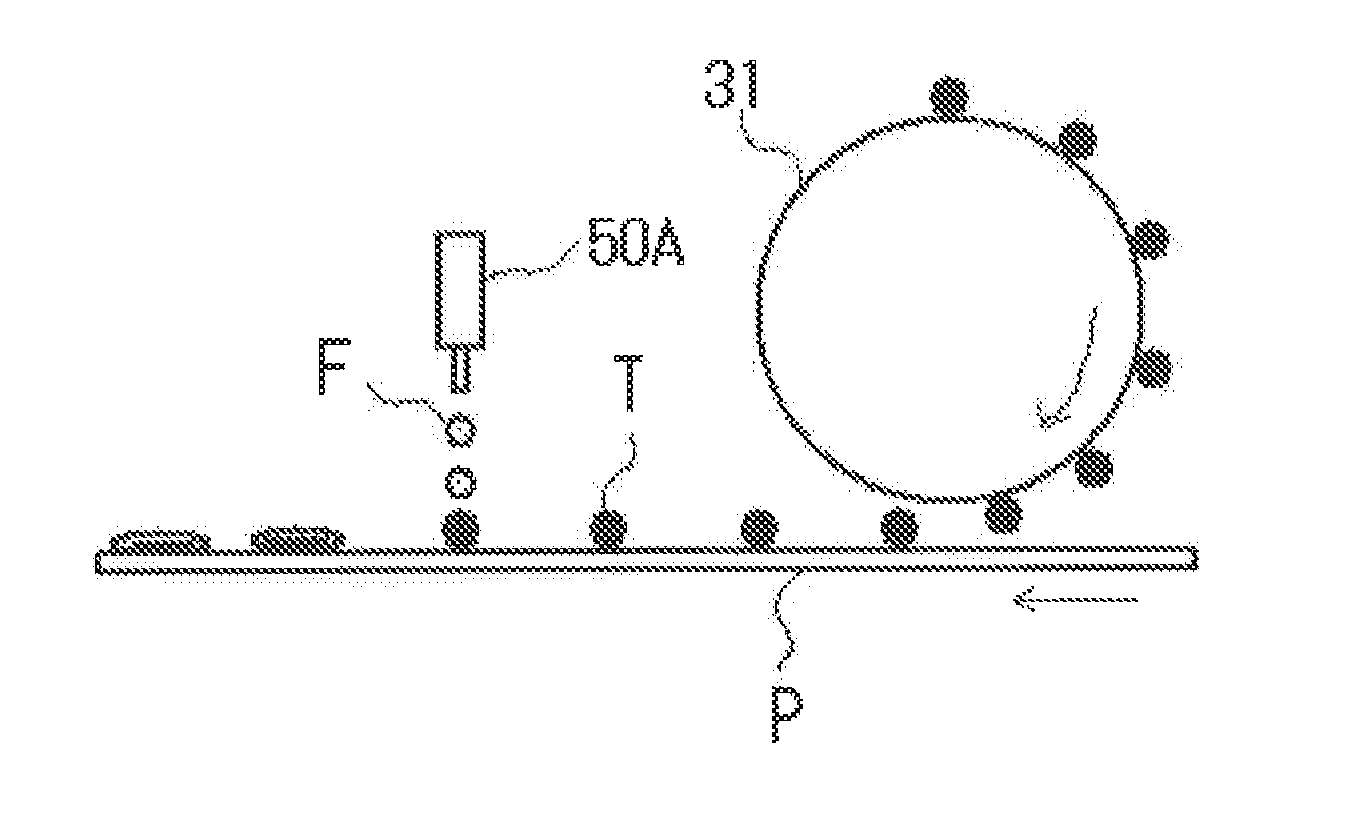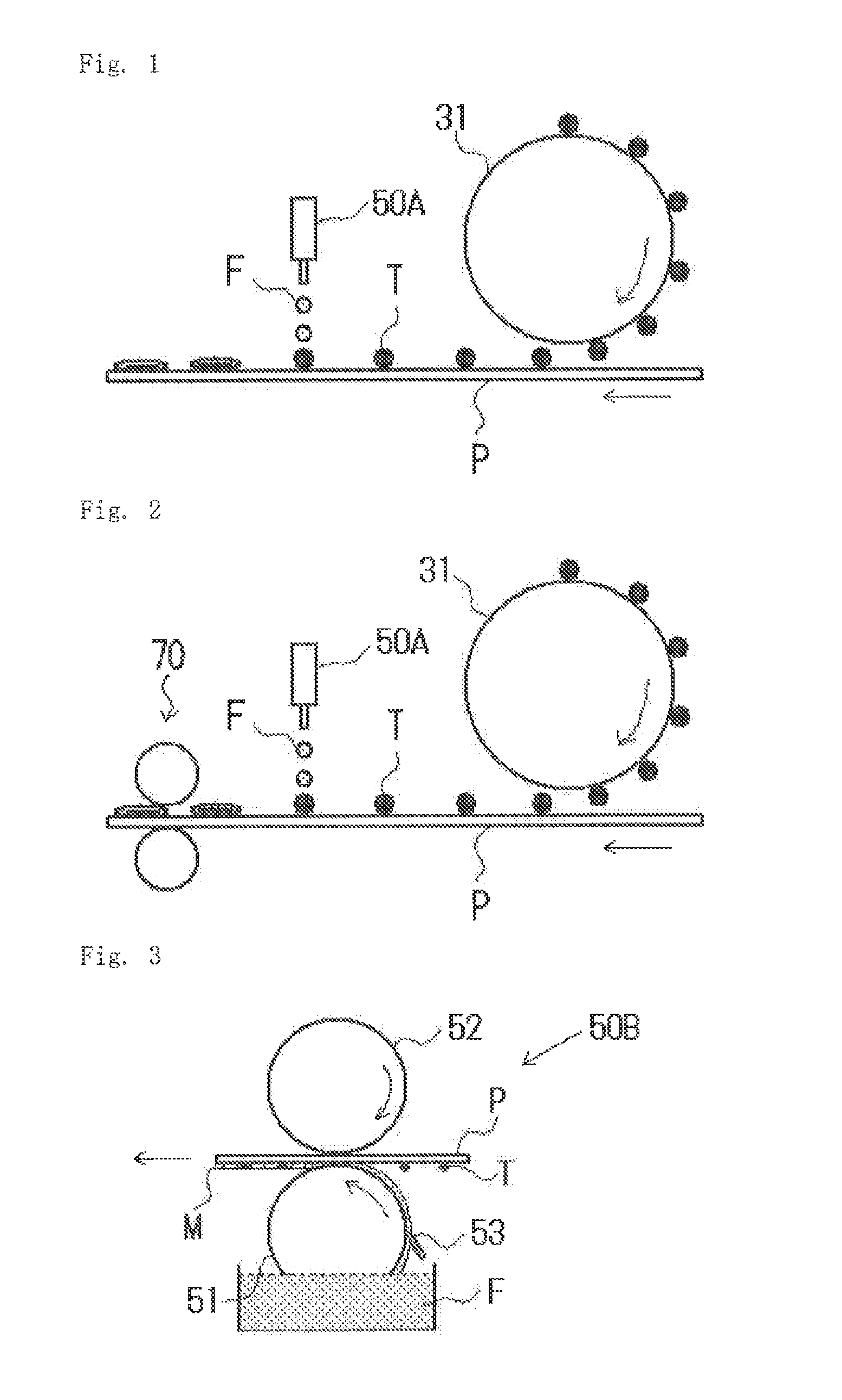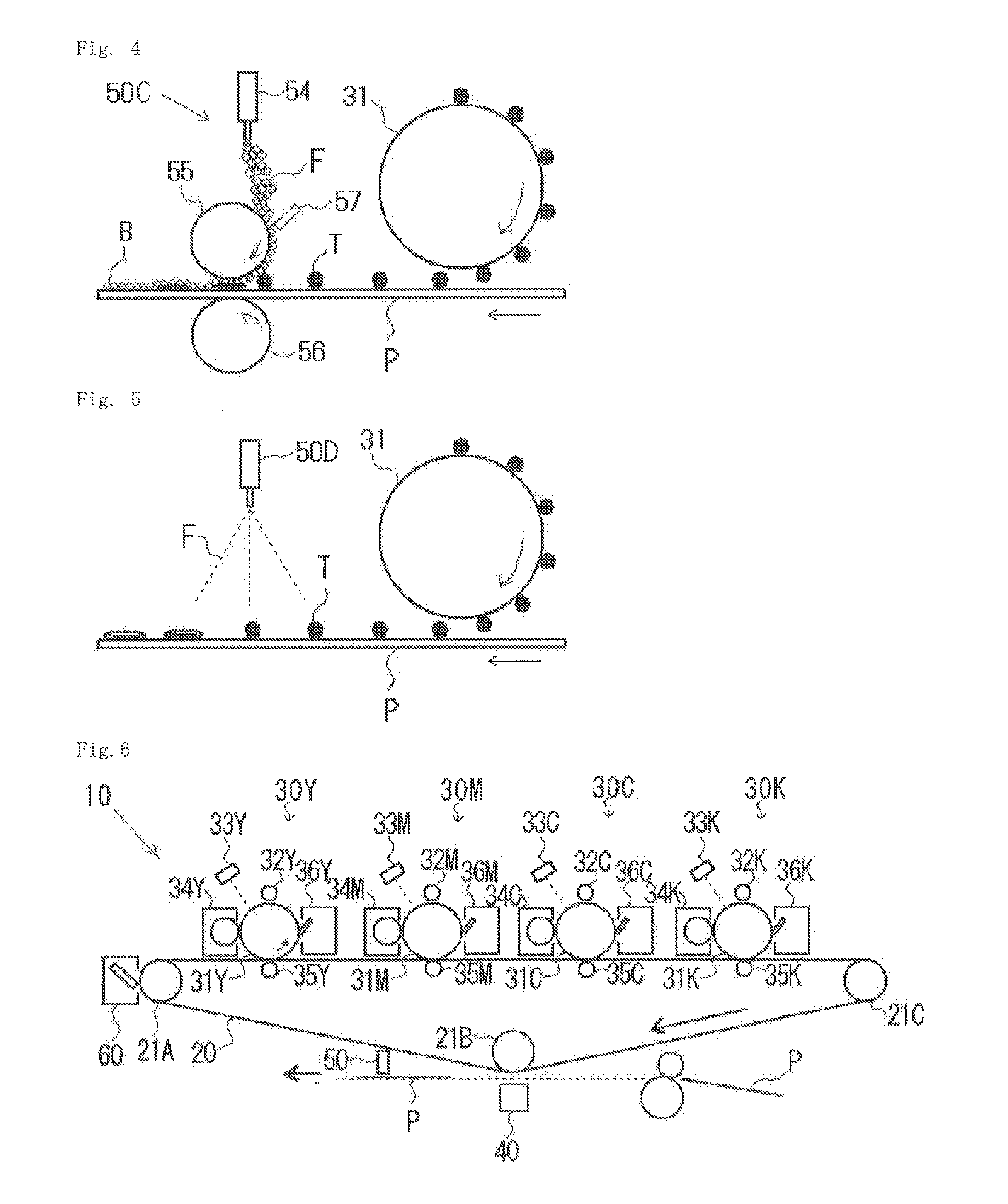Image forming method
a technology of image forming and forming solution, which is applied in the direction of instruments, electrographic process equipment, optics, etc., can solve the problems of reducing affecting the image quality, and consuming more than half of the consumption power of toner heating, etc., to achieve a higher drying rate, reduce the supply amount of fixing solution, and improve the fixing rate
- Summary
- Abstract
- Description
- Claims
- Application Information
AI Technical Summary
Benefits of technology
Problems solved by technology
Method used
Image
Examples
production example 1
of the Toner
[0207](1) Preparation of a Binder Resin Particle Dispersion Solution
[0208]In a reaction container having an agitation device, a temperature sensor, a cooling tube and a nitrogen introduction device, 4 parts by mass of C10H21(OCH2CH2)2SO3Na anionic surfactant was put together with 3040 parts by mass of ion exchange water, and thus a surfactant aqueous solution was prepared. To the surfactant aqueous solution described above, a polymerization initiator solution obtained by dissolving 10 parts by mass of potassium persulfate in 400 parts by mass of ion exchange water was added, the temperature was increased to 75° C. and thereafter a monomer solution formed of 532 parts by mass of styrene, 200 parts by mass of n-butyl acrylate, 68 parts by mass of methacrylic acid and 16.4 parts by mass of n-octylmercaptan was dropped into the reaction container for 1 hour. After the dropping, the resultant substance was polymerized by being heated and agitated at 75° C. for 2 hours, and th...
production example 2
of the Toner
[0216]A toner [2] was produced in the same manner as in the Production example 1 of the toner except that the amount of methacrylic acid added in the preparation of the binder resin particle dispersion solution was changed to 120 parts by mass. The glass transition temperature of the binder resin particles produced was 42° C., and the weight-average molecular weight thereof was 30,000. In addition, the content of a dissociation acid monomer in the binder resin particles produced was 15%.
production example 3
of the Toner
[0217]In a flask having an agitation device, a nitrogen introduction tube, a temperature control device and a distillation column, the following polycarboxylic acid and polyhydric alcohol were poured, the temperature of this reaction solution was increased to 190° C. for 1 hour, and after it was confirmed that the reaction system was uniformly agitated, a catalyst Ti(OBu)4 (0.003 mass % to the total amount of carboxylic acid component of the polyester resin) was put in.[0218](Polycarboxylic Acid)[0219]terephthalic acid: 30 parts by mass[0220]isophthalic acid: 3 parts by mass[0221]adipic acid: 3 parts by mass[0222](Polyhydric alcohol)[0223]2-mol adduct of 2,2-bis(4-hydroxyphenyl) propanepropylene oxide: 75 parts by mass[0224]2-mol adduct of 2,2-bis(4-hydroxyphenyl) propaneethylene oxide adduct: 25 parts by mass
[0225]Furthermore, while the generated water was being distilled away, the temperature was increased to 240° C. for 6 hours, the dehydration condensation reaction w...
PUM
 Login to View More
Login to View More Abstract
Description
Claims
Application Information
 Login to View More
Login to View More - R&D
- Intellectual Property
- Life Sciences
- Materials
- Tech Scout
- Unparalleled Data Quality
- Higher Quality Content
- 60% Fewer Hallucinations
Browse by: Latest US Patents, China's latest patents, Technical Efficacy Thesaurus, Application Domain, Technology Topic, Popular Technical Reports.
© 2025 PatSnap. All rights reserved.Legal|Privacy policy|Modern Slavery Act Transparency Statement|Sitemap|About US| Contact US: help@patsnap.com



